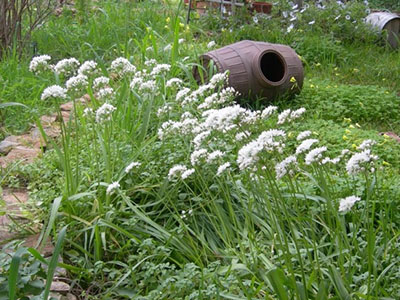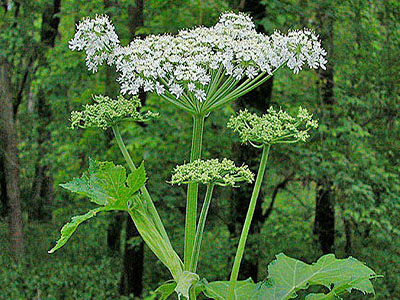
Family Umbelliferae.
.
Hogweed is one of the most poisonous plants, so it is very rare to see it in the garden.
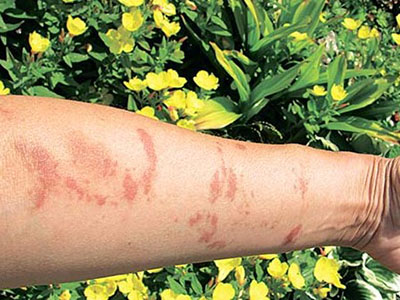
In addition, many summer residents try to immediately get rid of it at the first sign of appearance.
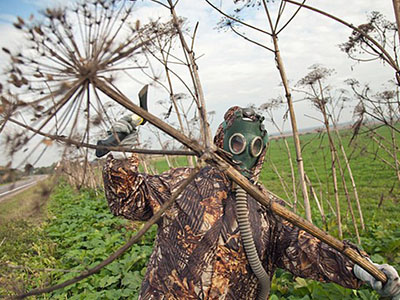
There are those who are not afraid of hogweed and grow it in a flower garden. It is worth noting that this is a rather attractive and extraordinary plant. It is also valued for its healing properties.

This article provides a detailed description of the hogweed plant with a photo, as well as advice from experienced gardeners on growing it on the site.
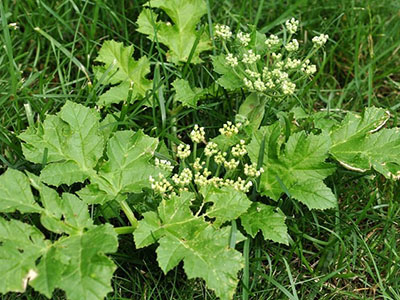
The genus Heracleum belongs to the Umbelliferae family and includes about 70 species. Most species of hogweed are large herbs, have huge leaves and reach a height of 3-4 m or more.
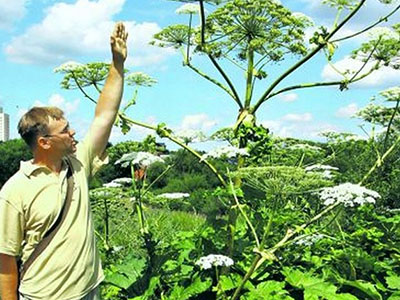
There are, however, small herb plants up to 20 cm high, but there are few such species. For gigantic growth, power and splendor, the Roman botanist Pliny gave the hogweed a generic name in honor of the legendary hero of the ancient Greeks Hercules.
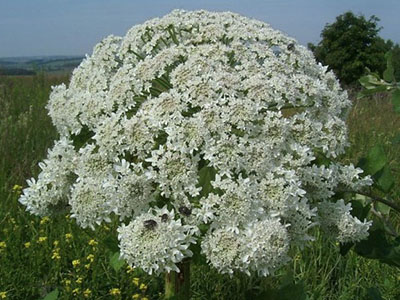
Many species really justify this name, since their heroic sizes stand out among all the grasses of the temperate zone of the globe. The Russian name is associated with the use of hogweed for food, in particular, young greens for cooking borscht.
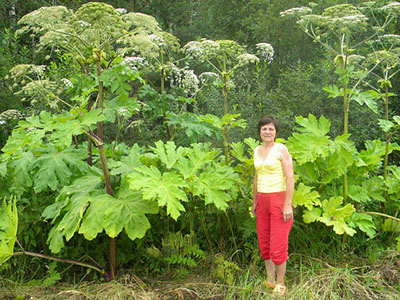
What does a perennial plant hogweed look like (with photo)
Under natural conditions, it grows in Europe, Asia, Africa and America, as well as in the taiga regions of Russia.
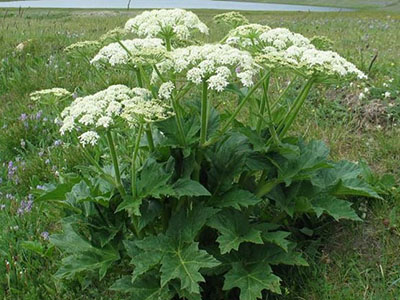
According to the botanical description, hogweed is a tall biennial or perennial herbaceous plant, completely covered with coarse hair.

The root system of plants is pivotal, well developed, but does not penetrate the soil very deeply. The bulk of the roots are located in the 0-30 cm layer, although individual roots reach a depth of 2 m or more.

Plants that have entered the reproductive phase of development have a powerful, rounded, furrowed, hollow, very juicy flower-bearing stem 1.5 to 4.5 m high. Its diameter at the base is 6-8 cm, weight up to 2-4 kg. The stem branches at the top.

Lateral shoots sometimes also sprout from the leaf axils of the middle tier, and when the plants stand sparsely, even at the root collar. The stem has 3-6 internodes with leaves located on the nodes.
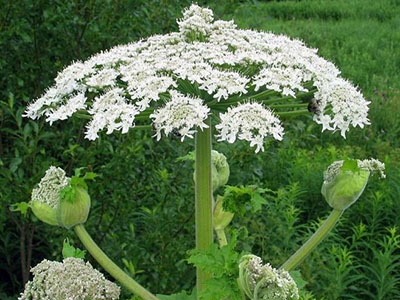
The leaves of the hogweed plant are pinnately dissected, with ovate, serrated, lobed or pinnatipartite lobes; swollen vagina.

The length of the basal and lower stem leaves together with the petiole reaches 1.5-2 m, and the length and width of the blade is 60-120 cm. From the bottom up the stem, the size of the leaves decreases.
Inflorescences are placed at the top of the main and side shoots. The inflorescence is a complex umbrella. The central umbrella, whose diameter is 30-75 cm, includes 50-120 umbrellas.
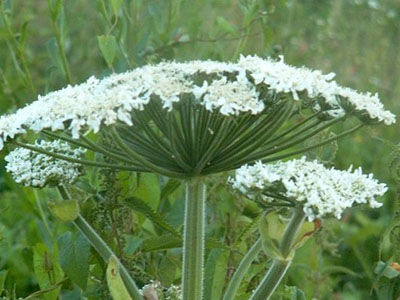
Hogweed has 2 types of flowers – the correct form (actinomorphic), which are located in the center of the umbrellas (6-7 mm), and irregular (zygimorphic), or marginal (16-20 mm), in which the outer petals are enlarged.
As you can see in the photo below, the hogweed plant has white flowers in complex, multi-rayed, large umbrellas, mostly without wrappers, but with multi-leaf wrappers:
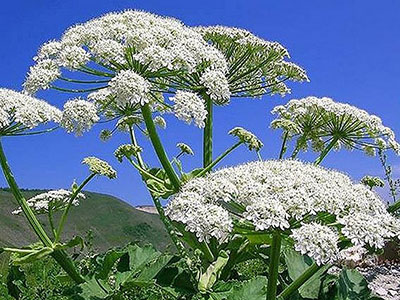
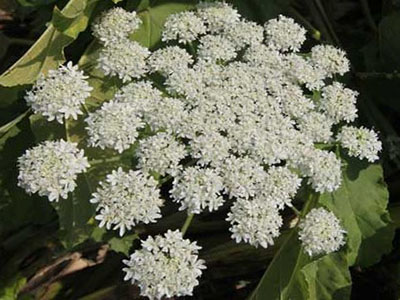

The teeth of the calyx are conspicuous; petals obovate, with a curved apex, deeply notched, 5 in number; marginal petals are larger than the rest.
Stamens – 5. Ovary inferior, two-celled, downy at flowers, with one testicle in each nest.
At the apex, the ovary carries a pad (glandular disc) that secretes sweet juice; columns 2. Pollination of plants is cross-pollinated, the male elements of the flower ripen earlier than the female ones. The main pollinators are Hymenoptera and Diptera (bees, wasps, bumblebees, flies, butterflies, bugs).
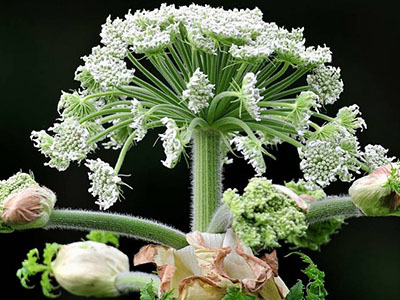
When describing the hogweed plant, it should be noted that its fruit is a two-seeded, obovate, which, when ripe, breaks up from the bottom up into 2 fruitlets hanging on a solid or forked filamentous column.

In each fruit, the inner side (the contact surface of both achenes) and the outer side, called the back, are distinguished. On the back of each fruitlet, 3 medium filiform and 2 marginal winged ribs protrude. Longitudinal channels run in the wall of the fruit, containing essential oils, on which the smell of the fruit depends. Blooms from June to autumn. Grows in meadows and forests.

To find out what a hogweed plant looks like and what its characteristic features are, you need to look at the following photo:

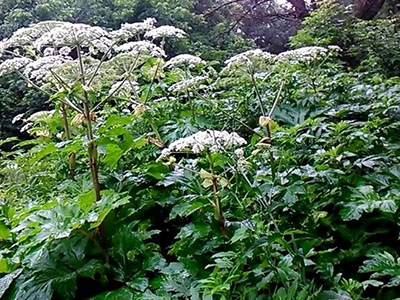

Hogweed under normal conditions are biennial plants, that is, they bloom in the second year. But if they are not allowed to bloom, hogweed bushes can grow in one place for a long time, their root is large, thick, it is difficult to pull out or dig it out.
After flowering, the plant dies, leaving a huge amount of seeds that easily scatter and remain viable in the soil for a long time.

What is dangerous herb hogweed for people
Unfortunately, cow parsnip grass is becoming another example of ill-conceived human intervention in nature, and, as always, a person will be punished for this.
Unfortunately, not everyone knows how dangerous herb hogweed is and what harm it can do to the health of people in close contact with it. Almost all large species of this plant are harmful to humans, and if they meet on the road or in any other place, you should try to get around them as far as possible. This is by no means an exaggeration.
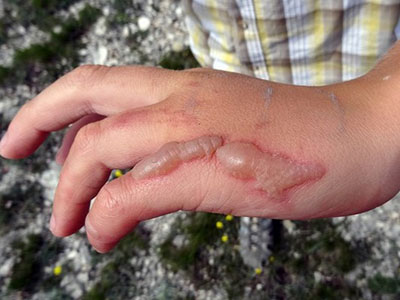
The fact is that these plants contain substances that sharply increase the sensitivity of the skin to ultraviolet radiation, and when juice gets on the skin, burns appear very quickly at this place, the strength of which depends on the time that the juice remained on the skin and on the strength of sunlight.
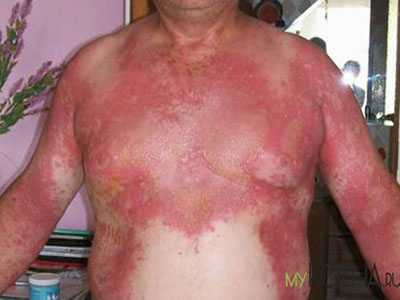
The most unpleasant thing is that if the juice of the poisonous hogweed plant remained on the skin for a long time, then with the shortest exposure to the sun, a person will get the same burn as if he had been sitting in the sun for a very, very long time.
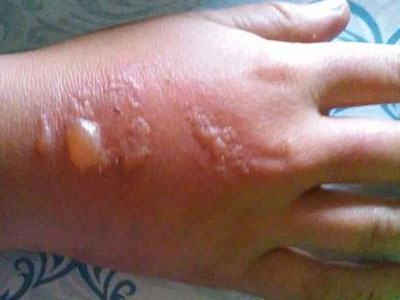
With severe burns, deep and long-healing ulcers form, and after they heal, a dark spot remains in this place for two to three years. Clothing does not always protect against burns if it is made of light fabric, such as chintz, but in this case the burn will be weaker.
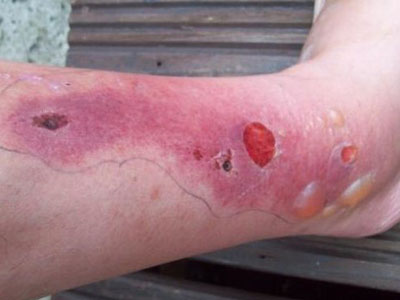
Types of hogweed in floriculture (with photo)
In floriculture, a variety of hogweed called Mantegazzi (Heracleum mantegazzianum) is used, which is considered the largest member of the family. Tall, perennial ornamental plant, reaching 2.5 m or more.
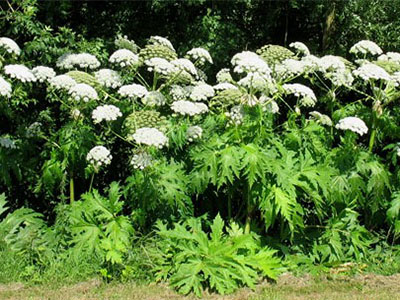
The stem is pubescent. Ornamental, pinnately dissected, rich green leaves are formed at its base. The flowers are white, up to 1 cm in diameter, collected in large, dense umbrellas. Flowering in June-August.
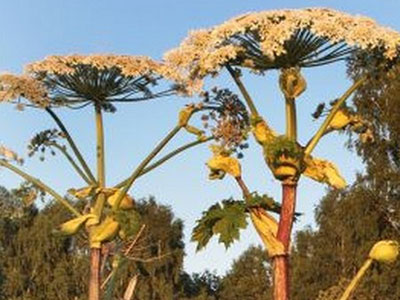
A feature of this species is its ability to rapidly spread over a vast territory. After fruit ripening, the plant dies.
You can understand what a variety of Mantegazzi hogweed is by looking at the photo shown above.
Hogweed (Heracleum pubescens). Perennial. The stems are rounded, with characteristic grooves, up to 3 m high, ending in a white, thick, spindle-shaped root.
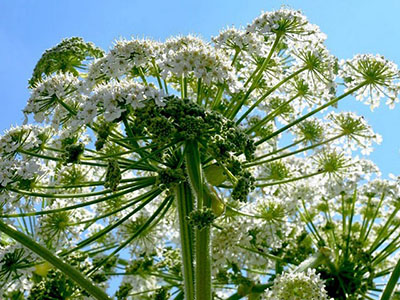
The leaves are large, sometimes reach a width of 0.7 m, petiolate, elliptical, pubescent.
The leaves are larger at the bottom of the stem than at the top. Inflorescences are complex, umbellate. The flowers are white, rarely pinkish. All parts of the plant are covered with small burning hairs and contain essential oil.
The plant can cause severe skin burns!
A photo of a fluffy hogweed demonstrates all the decorativeness of this plant and proves the expediency of its use on the site:


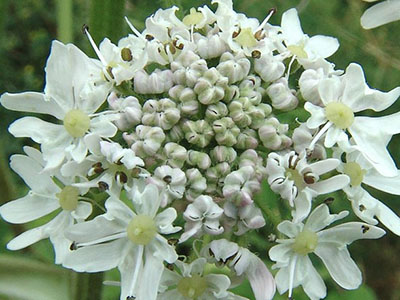
Siberian hogweed (Heracléum sibíricum). This is a rather large, up to 1.5 m perennial or biennial during flowering, with rough, rough, pinnately dissected leaves with large pinnately lobed lobes. The leaves are always dark-colored.
When describing the Siberian hogweed, it is worth noting that its stem is ribbed, bristly, with one to three branches in the upper part, the leaves on it, in contrast to the petiolate basal ones, are sessile, with a greatly reduced plate, passing into a greatly expanded vagina. The uppermost leaves do not have blades at all. Not a single plant has leaves that differ so much in shape at the same time, this is one of the diagnostic signs of hogweed.
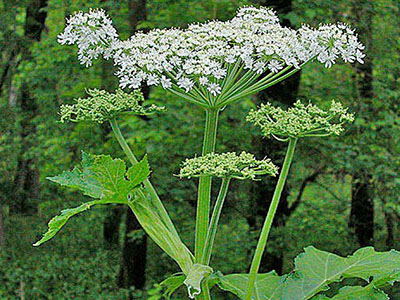
In a hogweed plant of this species, the central umbel is larger with 15–30 rays, the lateral umbels are smaller, and often do not produce seeds. Petals are almost completely green or greenish-yellow. Hogweed is the only plant in the middle lane that is entirely dark green in color. The fruitlets are strongly compressed, flat, with a wing along the edge.
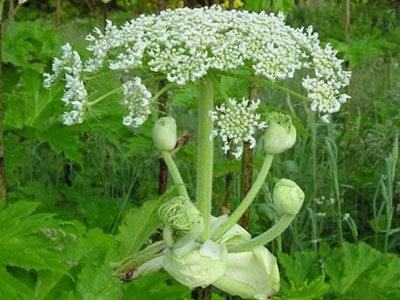
Seedlings from achenes and shoots from buds appear in March-May. It blooms from the second year of life, in June-September, and bears fruit from July to October.

From one plant, you can get 8000 seeds, which do not germinate when freshly ripe. Seeds germinate only in the spring of next year, from a depth of no more than 10 cm. The plant is poisonous.
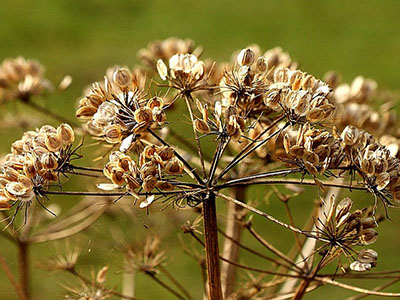
Hogweed (Heracleum dissectum) – a herbaceous plant of the umbrella family, up to 2 meters tall, with a large root and a ribbed stem covered with hard hairs. The basal leaves of hogweed are petiolate, large, trifoliate. The flowers are white, collected in a large umbrella. Hogweed grows in sparse deciduous and coniferous forests, in forest meadows. Distributed in the European part of Russia, Siberia and the Far East.
How unusual the dissected hogweed plant looks like, in the photo above, you can see and make sure that this culture is great for the garden:

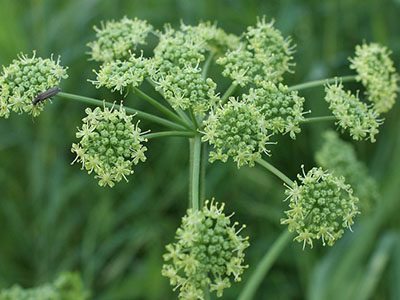
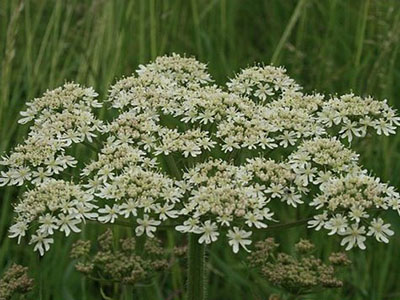
Features of the growth and development of hogweed herb
Seeds begin to germinate only after the development of the embryo is completed, when its size increases to 4-5 mm, and its weight increases by about 17 times. This requires a period of 60-90 days with a temperature of 2-5 ° and optimal humidity.
Under natural conditions, when seeds are shed on the soil surface, most of them acquire the ability to germinate only by the spring of next year. The same is observed during late autumn sowing with their incorporation into the soil. For spring sowing, seeds need artificial stratification. The duration of stratification depends on the quality of the seeds themselves.
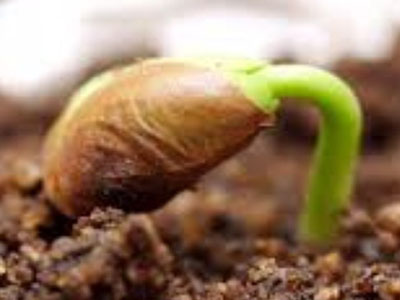
In this case, the zonal features of the climate and the weather conditions of the growing season in the year of their receipt are of primary importance.
According to its characteristics, the hogweed plant is monocarpic, that is, it bears fruit once in a lifetime with a long-term development cycle. The lifespan of a plant is determined by the duration of the period of development of the shoot, which is formed during the germination of the seed.
In the process of evolution, Sosnovsky’s hogweed lost the ability to branch the shortened underground vegetative part of the shoot, which led to the plant dying off after fruiting.
In the botanical description of the poisonous hogweed plant, it is indicated that some scientists divide its entire life cycle into two age periods:
1) virginal and 2) reproductive.
The first period is the longest and lasts, depending on the growing conditions, from 1 to 8-10 years or more. The following stages can be distinguished in it: a) the formation of seedlings and the state of seedlings; the stage begins with the development of the embryo and ends with the death of the cotyledons (phase 2-3 true leaves); b) juvenile, or youthful state – from the death of the cotyledons to the formation of the 6-7th leaf, in which the size and dissection of the leaf blade reach a maximum, and c) the adult vegetative, or definitive state, when the plant is already powerful, but cannot yet form generative organs and the aerial part is represented only by leaves.
In addition, in the description of poisonous hogweed, it is mentioned that this plant is of the winter type, that is, it does not bloom the first year and grows very slowly in the initial period after germination in the spring. When sown in autumn, seedlings appear when the soil in the upper layer warms up to 7-10°C, although the seeds germinate already at a temperature of 1-2°C. Cotyledons after reaching the surface continue to grow and perform the function of assimilation.
With the appearance of the first true leaf (10–12 days after germination), the hypocotyl and the upper (basal) part of the root begin to shrink, which by the end of the growing season ensures that the root neck is immersed in the soil by 2–3 cm. Subsequent leaves appear at intervals of 10–15 days.

The duration of their life in comparison with the first consistently increases from 40-45 days to 65-70, and the size and degree of dissection also increase.
During the growing season, depending on the zone, 6-12 leaves are formed on the plant, forming a basal rosette. The height of the hogweed flower under good conditions reaches 100-150 cm, and in bad conditions does not exceed 50-60 cm.
The slow growth of plants after germination is due to the rapid formation of the root system. By the end of the growing season, the roots penetrate to a depth of 90-100 cm, and their weight is 3-4 times the weight of the aerial part.
In the second and subsequent years, the spring regrowth of poisonous herb hogweed begins very early, when frosts of 5-6°C are still observed, and the average daily temperature is in the range of 2-3°C. The overwintering vegetative bud of renewal begins to grow and 3-5 peripheral leaves appear simultaneously. Then several more leaves are formed, which together create a rosette (up to 10-15 leaves).
The leaves that appeared at the very beginning soon gradually die off, while the rest continue to grow and quickly reach their maximum size. The most rapid growth of leaves is observed 20-25 days after the start of regrowth, when their growth in length and width is 5-8 cm per day.
For 40-45 days of vegetation, the height of plants reaches 150-170 cm. The basal leaves of fruit-bearing individuals differ in more intensive growth.

A stem has as many stem leaves as there are nodes on it. The internodes of the cow parsnip are long – up to 50-60 cm or more.
Not everyone knows what hogweed and its leaves look like, but meanwhile the lower leaf plates are powerful, they are the same in shape as the basal ones, and even larger in size. Up the stem, the size of the stem leaves decreases significantly. The uppermost leaves are sessile, trifoliate in shape. The stem grows especially rapidly in the initial period, i.e. immediately after the basal leaf emerges from the sheath. In 20-25 days, it reaches a height of 170-200 cm. Daily gains at this time are up to 10 cm or more.
Budding of plants begins 50-55 days after the start of regrowth, and flowering – after 60-70 days. In the budding phase – the beginning of flowering, the maximum accumulation of dry substances is noted. Growth processes by this time are almost completely attenuated and there is a rather sharp transition from intensive accumulation of dry matter to photosynthetic depression.
In fruit-bearing plants, during the flowering period, the leaves begin to dry out – first the basal, and then the stem. After fruiting, the plants die off completely. Non-fertile individuals remain green until late autumn, however, the accumulation of biomass by mid-summer also stops. Consequently, a feature of the vegetation of hogweed is the presence of summer-autumn depression.
The hogweed plant has only one renewal bud, from which a powerful generative shoot develops in the last year of life, which has the ability to branch, mainly in its upper and middle parts.
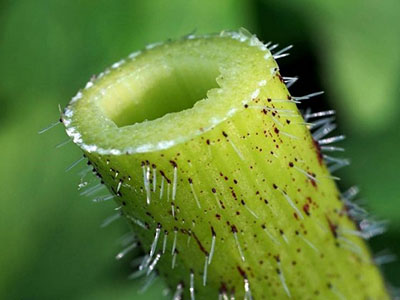
The axillary buds of the basal leaves most often remain dormant. If the plant is mowed during the growth of the stem or during the budding phase, then the axillary buds awaken and generative shoots of the second order appear from them.
At the second mowing, shoots of the third order are formed, and so on until the plant is exhausted and dies. Thus, the onset of the generative period in the life of a plant cannot be prevented by mowing. The only way to increase the duration of the economic use of plantations is to thicken the sowing.
With rarefied standing of plants, the duration of economic use of crops does not exceed 4-5 years, and then there is a sharp decrease in yield. In such crops, most plants complete their life cycle within 2-3 years.
At the same time, many examples are known where plantations yielded very high yields for 8-10 years or more.
Thus, perennial monocarpic plants, including Sosnowski’s hogweed, can be used in thickened crops without reseeding for quite a long time, while receiving high yields every year.

Vegetative depression in hogweed can be overcome by mowing crops. In the presence of a sufficient amount of moisture in the soil, the plants grow relatively quickly, and the aftermath yield is quite high.
Conditions for growing hogweed on the site
hogweed – herbaceous plant, ideal for open ground, as it is unpretentious, able to grow in adverse conditions, and adapt to any climate. This herb is very hardy, able to withstand extreme heat and drought, as well as low winter temperatures.
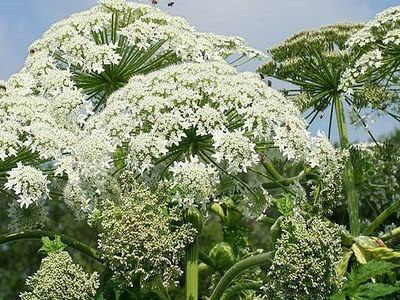
Location. Hogweed is photophilous, but grows well in partial shade. Any place on the site will suit him.
The soil. Soil prefers nutritious, loose. The soil around the plant must be periodically loosened and weeds removed at the same time.
Watering. This flower grows best in moist soil, but with stagnant moisture, it can be affected by root rot and other diseases. It should be watered only in extreme heat.
Topdressing. Hogweed completely dispenses with top dressing, but in order for the plant to please with its lush flowering, it is recommended to add organic matter once a season in early spring.
Transfer. In one place can grow no more than 7 years. After this time, the bush needs to be rejuvenated. Divide it into parts and transplant to a new place.
Winter hardiness. The plant is winter-hardy, does not need shelter for the winter.
Growing problems. Hogweed is extremely rarely affected by diseases and pests on the site, and the main difficulty in breeding it is to limit its rapid spread across the garden area. During the fruiting period, with gusts of wind, the seeds scatter over long distances. To prevent self-seeding, it is necessary to cut off the buds and opened flowers in a timely manner.
When working with a poisonous flower, observe safety measures: try not to touch it with bare hands, use gloves when working.
Often, weeds grow in the area near the garden species of hogweed. They must be immediately disposed of, trying to destroy even before the appearance of seeds, using herbicides for this. You can’t cut weeds.
Reproduction. The main way how hogweed reproduces is by sowing seeds, as they germinate easily and develop successfully. Seeds are collected in autumn, tying umbrellas with wide gauze. After harvesting, the seeds are dried and sown in open ground before winter before frost.
Planting is carried out at a depth of 2 – 3 cm. The distance between plants is 1-2 m. There is no need to shelter crops for the winter. After the snow melts in early spring, the first shoots will hatch. First, the root system will actively develop, then foliage will appear. Hogweed blooms in the second year after planting.

During the spring breeding of hogweed, the seeds are pre-stratified by removing them for 1 month in a cold place.
How to effectively use hogweed
Garden species of hogweed look very decorative. Therefore, there are gardeners who appreciate this culture and find ways to use hogweed effectively.
This tall flower is suitable for group and single plantings. Also recommended as a groundcover. It can be planted on lawns, lawns, near ponds, between large garden trees.
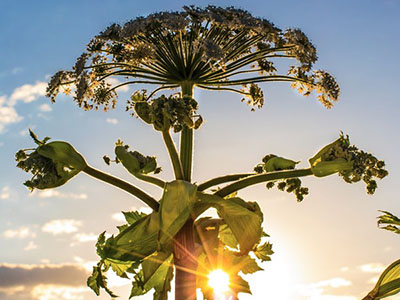
This plant is a very valuable medicinal crop. How to use cow parsnip in folk medicine has been known since ancient times, for example, roots and leaves are used in the treatment of nervous diseases, especially epilepsy. The essential oil is found throughout the plant, but is most concentrated in the fruits – 1.75%. Vitamin C found.
Therapeutic action: anti-inflammatory, sedative. The oil has a very strong antimicrobial and antiseptic activity against Escherichia coli. Used for dyspepsia, respiratory infections, epilepsy, toothache, dermatosis, arthritis, bruises.

Feed for large and small cattle, horses, pigs. Good honey plant.
How the hogweed flower looks on the site among other ornamental plants is shown in the selection of photos below:


